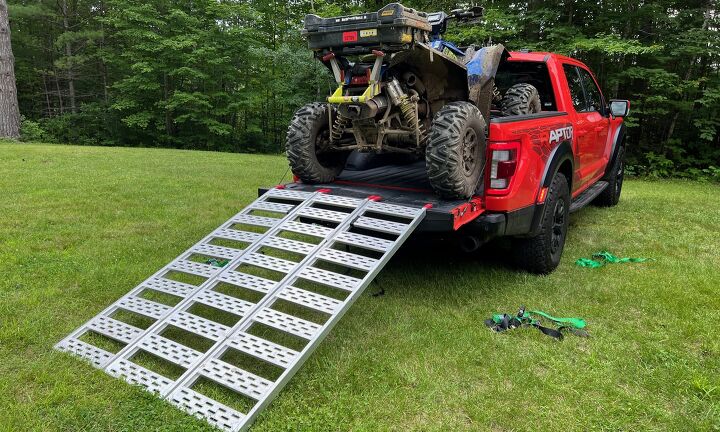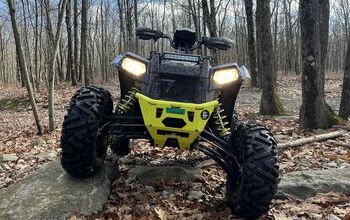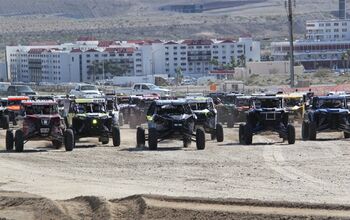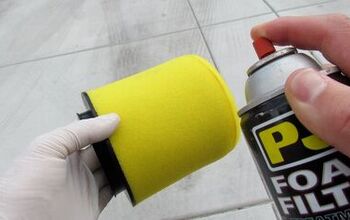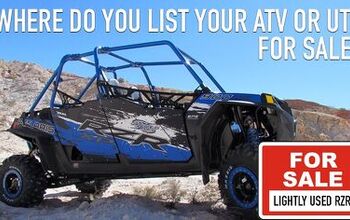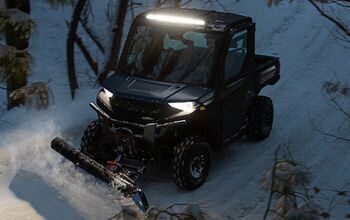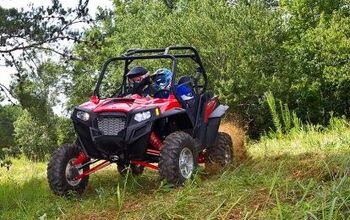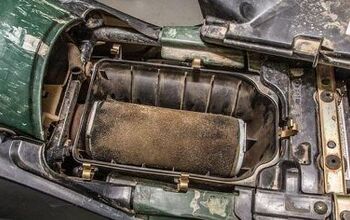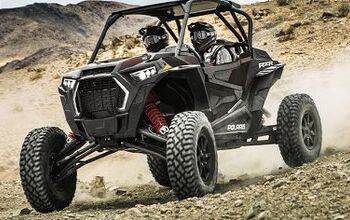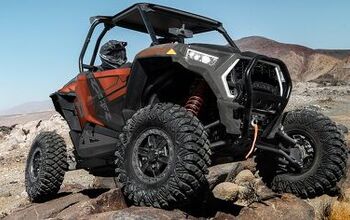How Do You Load an ATV Into a Pickup?

There’s no easier way to transport an ATV than in the bed of a pickup truck. Doing so seems simple on the surface and it is, so long as you do everything carefully and correctly. But with the proper equipment and know-how, hauling a quad in the back of a truck makes for the easiest, most efficient way to transport a four-wheeler.
First things first, you need to determine if the quad at hand fits in the bed of the given truck. Trucks have certainly gotten bigger over recent years and so have the ATVs many of us ride, but the truck beds themselves into which the ATVs would ideally fit have not changed correspondingly. As such, you might find that your four-wheeler doesn’t fit properly into the bed of every pickup in a class. In those instances, we recommend a small utility or powersports-specific trailer. But trailers aren’t for everybody and some of us prefer to travel light, so here we turn to ramps as the tool for the job.
Ramps are the go-to piece of kit for loading a machine into a truck. These pieces of metal connect ground (or surface on which you load from) to truck (be it bed, tailgate, or flatbed). Ramps come in a variety of shapes and sizes, the two main differentiators being two split ramps or tri-fold, the former being to individual ramps that have to be set up independently versus the latter’s connected, three-piece folding design. Standard two-piece ramps are great in that they can also be used for dirt bikes and vehicles of widely varying width (such as a 90cc machine to the biggest of ATVs) with ease. Tri-folds have a fixed maximum width (usually in the 48-50” range) which can limit some extra-wide modified machines from getting each side of the tires on the ramp itself.
Ramp type selected, let’s turn to securing the item at hand to the vehicle. The danger of ramps comes from the possibility of them moving when under load; that is, the ramp sliding out from under the ATV as it climbs upward and into the bed. Assuring that they stay in place is paramount to completing the task safely and successfully.
Once everything is situated as closely as possible to the ideal position, the ramps should be further “locked” in position by using the ropes, straps, or hooks that come on almost all examples of powersports ramps. These straps should be brought as close to the inside of the ramp rungs as possible, then the open end connected to the openings to the right and left of the trailer hitch which are used to keep trailer chains in place. You want to pull these straps as tight as possible as doing so helps keep the ramps in place, thus preventing them from moving outward when under load.
After everything is ready for use, it’s time to load up. Be sure to always put on your protective safety gear like a helmet and gloves if you haven’t yet, as the dangerous part of the process is up next. If your ATV has 4WD, now is the time to shift into it; you want as much traction as possible making the climb from ground to bed. Next, ride the quad up to the base of the ramps then climb off and assure that machine and metal are properly lined up. If they are, get onto the four-wheeler, shift into gear (ideally low range if the machine is equipped with such), and nudge the front tires a foot or two up the ramps. If something feels wrong or the quad isn’t lined up just right, back down and adjust as needed.
If all looks good, lean forward on the machine while slowly easing on the throttle to gain just enough momentum to bring the machine up the ramps. Do not overdo it with the accelerator as that can be a recipe for lifting the front end, hitting the bed with far too much speed, or ending up as a viral fail video on the internet. Smooth is safe, and safe is smooth. Most ramps will create a fairly steep angle, so products like LongRamps, which are exactly what they sound like, exist to counter that should you want to take a less risky approach here.
Of course, if a ramp isn’t on hand or you simply want to try another method, there’s other ways to do the deed as well. If you and a few buddies are weightlifters, you can probably pick up a smaller ATV and lift it in the bed (just don’t tell your chiropractor). Some trailheads also offer loading dock style ramps from which you can load and unload your machine. You can also get creative if neither option is present by using a steep hill, just be careful with this one as it can be a little dicey in some situations. Any of these should work, and the next steps are universal across any loading methodology.
With the front tires in the bed, the next portion depends on the width of the ATV and the bed of the truck at hand. Narrow machines can slot between the wheelwells in the bed, but wider machines may need to ride up and over the wheelwells to fit with the quad’s front tires against the front of the bed. If you’re not sure about whether you can park your ATV on the wheelwells, consult your truck’s manufacturer to check the weight ratings (the same goes for the tailgate itself). Machine in the bed, bring it as close forward towards the rear window as is safe, being careful to not make contact. Glass is expensive, so be wary of this as machines do tend to shift in the back of the truck especially when going over bumps or unpaved roads that lead to trailheads.
You can counter the possibility of this mess with a large piece of wood or a tire positioned vertically between the vertical front of the bed and the quad itself, or by installing a headache rack to put a physical barrier between the glass and the bed. Whether you need to do this or not, it’s vital to strap the machine down so that it stays as close to in place as possible. This is for your safety as much as that of the others on the roadway, so using strong, reliable tow straps is simple reassurance of things not going awry. Using the bed-mounted hooks is a safe method, and some trucks have movable anchor points that can make things easy. Either should work, but again consult the manufacturer of the amount of weight the movable rails are rated to hold and support.
With the ATV fully loaded up, reverse the process of affixing the ramps to the truck and then slide them into the bed underneath the quad. Use tow straps, bungee cords, or rope to secure them to the ATV as well as to the bed itself. Then, if possible, shut the tailgate. This is an unlikely proposition for most full-size ATVs even in full-size pickups, but in some instances like a mid-size ATV with a full-size, long-bed truck it can be done. Should it not be possible, there is the option of the half-open tailgate in which the tailgate cables are draped over the hooks on either side of the bed opening, creating a 45-degree angle to keep things in place versus simply leaving the tailgate down. Or, if you're feeling risky, leave the tailgate down.
And that’s it. We recommend checking the machine and the tie-downs after a few miles of driving, but if you give the quad a smack on the tire and say “That isn’t going anywhere” then it should be fine. We’re kidding on that last part, but in all seriousness the task of loading an ATV into the bed of a truck can be dangerous if not done with precaution. If it is, you can enjoy the fruits of your labor by not having to tote around a trailer to haul your four-wheeler.

Ross hosts The Off the Road Again Podcast. He has been in the off-road world since he was a kid riding in the back of his dad’s YJ Wrangler. He works in marketing by day and in his free time contributes to Hooniverse, AutoGuide, and ATV.com, and in the past has contributed to UTV Driver, ATV Rider, and Everyday Driver. Ross drives a 2018 Lexus GX460 that is an ongoing build project featured on multiple websites and the podcast and spends his free time working on and riding ATVs.
More by Ross Ballot



